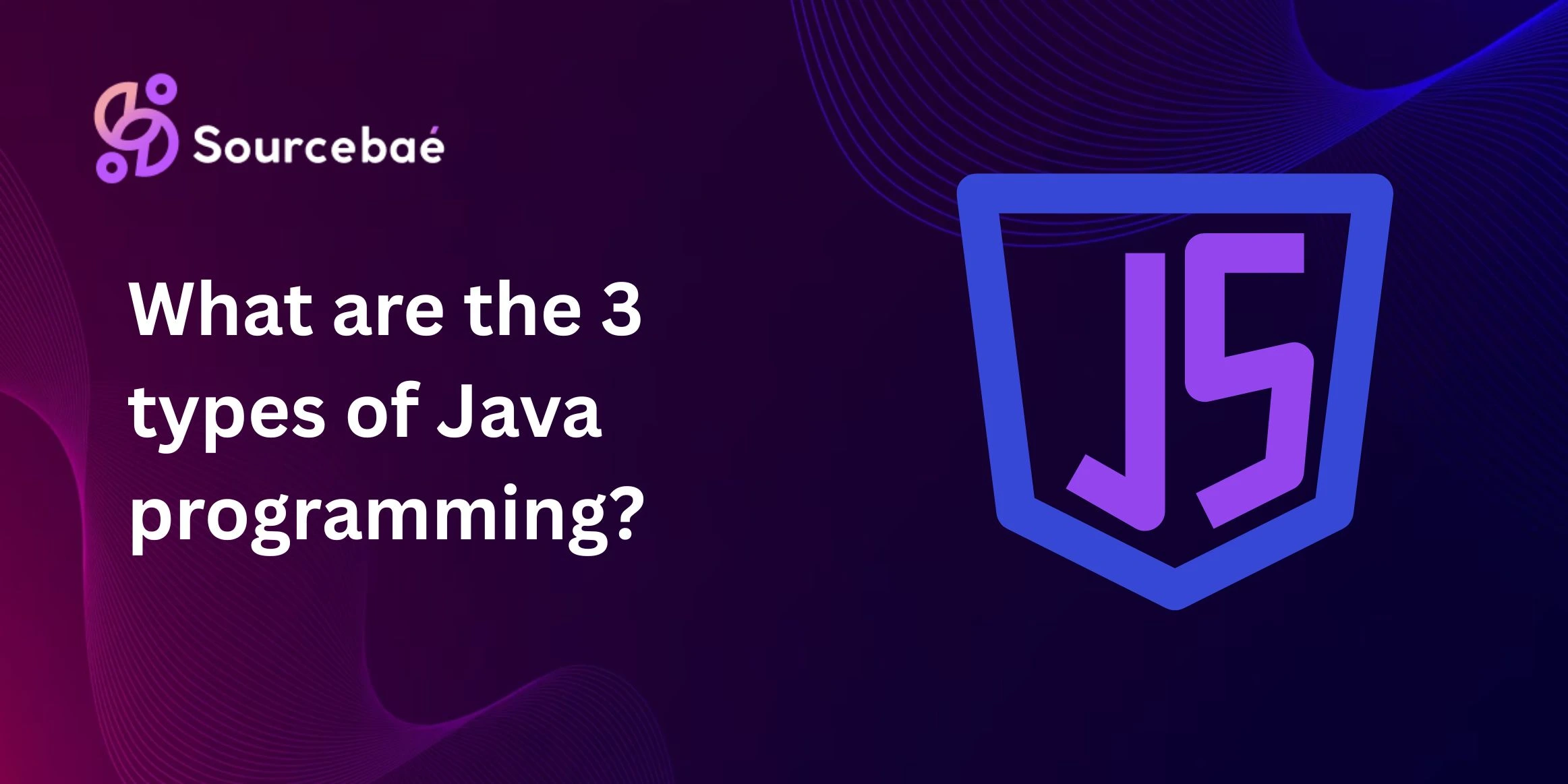Java programming is a cornerstone of modern software development, known for its versatility and robustness. Whether you’re a seasoned developer or just starting your programming journey, understanding the different types of Java programming is crucial. In this article, we’ll walk you through the three main types of Java programming: Java Standard Edition (SE), Java Enterprise Edition (EE), and Java Micro Edition (ME). So, let’s dive in and explore the diverse world of Java programming!
Java programming has evolved over the years to cater to various needs in software development. The three main types of Java programming—Java Standard Edition (SE), Java Enterprise Edition (EE), and Java Micro Edition (ME)—serve different purposes and are designed to address specific application requirements. Let’s delve into each type to gain a deeper understanding.
Java Standard Edition (SE)
Java Standard Edition, commonly referred to as Java SE, forms the foundation of Java programming. It provides the core functionalities and libraries that enable developers to create general-purpose applications. Java SE is ideal for beginners, as it introduces fundamental concepts and principles of programming.
Key Features of Java SE
- Basic Libraries: Java SE offers a rich set of libraries for essential tasks like input/output operations, data manipulation, and networking.
- Platform Independence: Java SE programs are designed to be platform-independent, meaning they can run on various operating systems without modification.
- Object-Oriented: Java SE follows the object-oriented programming paradigm, promoting modularity, reusability, and maintainability.
- Security: Java SE incorporates robust security features, including classloaders and bytecode verification, to ensure safe execution of code.
Java SE is commonly used for developing desktop applications, command-line tools, and standalone software. For instance, popular applications like media players, text editors, and games are often built using Java SE.
Java Enterprise Edition (EE)
Java Enterprise Edition, or Java EE, is tailored for developing large-scale, distributed, and enterprise-level applications. It builds upon the foundation of Java SE and adds specialized features to meet the demands of complex business environments.
Key Features of Java EE
- Component-Based Development: Java EE facilitates component-based architecture, allowing developers to create reusable components such as Enterprise JavaBeans (EJBs) and servlets.
- Web Services: Java EE supports the creation of web services, enabling communication between different applications over the internet.
- Scalability: Java EE applications can be easily scaled to accommodate high user loads and traffic.
- Database Access: Java EE provides tools and APIs for seamless database connectivity, essential for data-driven applications.
Java EE is used for building applications like e-commerce platforms, customer relationship management (CRM) systems, and financial software. Its robust features make it a go-to choice for businesses requiring secure and reliable software solutions.
Java Micro Edition (ME)
Java Micro Edition, also known as Java ME, caters to resource-constrained environments such as mobile devices, embedded systems, and IoT devices. It offers a scaled-down version of the Java platform optimized for devices with limited processing power and memory.
Key Features of Java ME
- Small Footprint: Java ME applications have a small memory and storage footprint, making them suitable for devices with limited resources.
- Configurations and Profiles: Java ME offers different configurations and profiles tailored to various device types, ensuring efficient resource utilization.
- Portability: Java ME applications can run on a wide range of devices, from feature phones to smart appliances.
- UI Frameworks: Java ME includes UI frameworks for creating user interfaces on devices with diverse screen sizes and resolutions.
Java ME is commonly used in mobile games, interactive kiosks, smart appliances, and other devices where resource efficiency is paramount.
Frequently Asked Questions (FAQs)
What Are the Key Benefits of Learning Java SE?
Java SE serves as an excellent starting point for new programmers due to its simplicity, extensive documentation, and widespread community support. Learning Java SE equips you with a strong foundation in programming concepts that can be applied across different programming languages.
Is Java EE Only for Large Corporations?
While Java EE is commonly associated with large corporations, its features can benefit businesses of all sizes. Small and medium-sized enterprises can leverage Java EE’s scalability and robustness to build reliable and secure applications.
Can I Develop Mobile Apps Using Java ME?
Yes, Java ME is suitable for developing mobile applications, especially for feature phones and devices with limited resources. It’s a great choice for creating lightweight apps that run efficiently on resource-constrained devices.
Is Java EE Limited to Web Applications?
No, Java EE is not limited to web applications. While it does excel in building web-based software, it also supports other application types such as distributed systems, backend services, and more.
Are There Other Java Editions Apart from SE, EE, and ME?
Yes, apart from SE, EE, and ME, there is also JavaFX, which is used for building rich graphical user interfaces (GUIs) and multimedia applications.
Which Java Edition Should I Learn First?
If you’re new to programming, starting with Java SE is recommended. Once you’re comfortable with the basics, you can explore Java EE or Java ME based on your interests and career goals.
SOURCEBAE: Hire Java Developers






